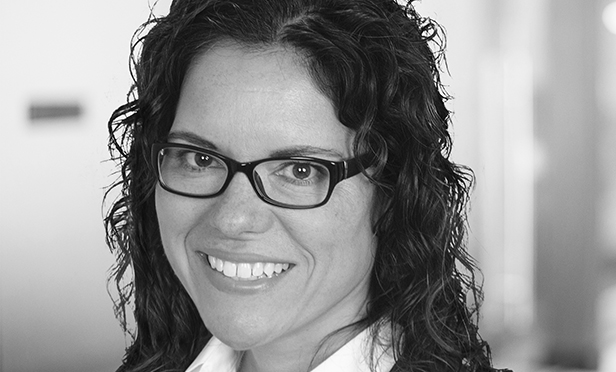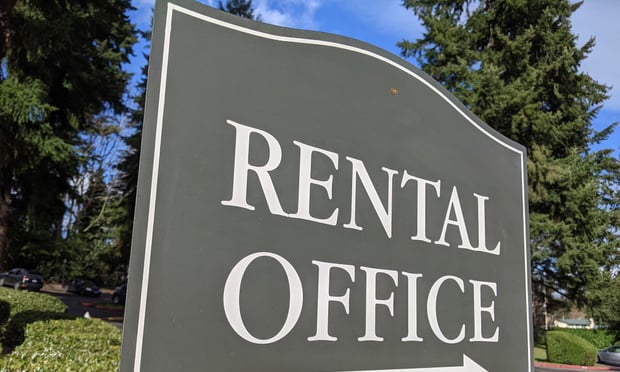
The Federal Housing Finance Agency (FHFA) reduced multifamily lending caps by over four percent in 2018 versus 2017. While this isn't optimal news, agency lenders and borrowers who take advantage of excluded categories will find no shortage of opportunities. Green Finance programs are one of the excluded categories—the cap does not apply to them. There are many established benefits to green financing, including preferred pricing, higher underwritten net operating income (NOI) and value (such as tenant and owner paid utility bill savings), additional loan proceeds, and energy study cost reimbursement (up to $3,500 for Freddie Mac and Cost of High Performance Building Module for Fannie Mae).
In the fourth quarter of 2017, in conjunction with their announcement about the 2018 lending caps, the FHFA gave guidance about how to leverage green programs from Fannie Mae and Freddie Mac to be excluded from the cap. How do these changes and underwriting requirements affect borrowers and how can they meet these new goals? By understanding these nuances, in conjunction with a knowledgeable, experienced environmental consultant, borrowers and lending agencies can take advantage of affordable housing incentives if they are paired with the green program guidelines.
Efficiency standards are the biggest standout changes for the Green Rewards lending program, meaning improvements financed through the program must result in more water or energy savings (borrower can pick either goal) than previously required. Fannie Mae has increased savings goals from 20 to25%, in addition to requiring a 4099h report to be submitted to the client along with a green report, and introduced some changes to the high performance building report, including decreased site visit sampling and additional water flow rate bag testing. Freddie Mac has implemented even greater efficiency goals, from 15% owner-paid savings to 25% whole property savings, introduced a new 1106 form that must be submitted to clients along with a Green report, and implemented some changes to the green assessment report, including increased site visit sampling and no minimum spend or vintage requirement.
For both Fannie Mae and Freddie Mac, there is no minimum spend requirement per unit, and partial implementation is possible; but, you must escrow 100% of selected energy and water efficiency measure (EWEM) costs and complete the improvements within 12 months.
The process for utility bill review and report formulation has largely gone unchanged. It still involves obtaining client questionnaires and utility data, which are then paired with comprehensive site visits and internal analysis, generation of an ENERGY STAR score and an energy and efficiency model. Experienced energy efficiency experts can navigate the new requirements and know how to achieve the highest efficiencies required. They can strategize to help multifamily lenders and borrowers take advantage of the green lending programs, save water and energy, and improve the NOI of their buildings.
Benchmarking is required for both Fannie Mae and Freddie Mac to report energy performance metrics through the ENERGY STAR portfolio manager. This includes an entire calendar year of utility consumption data for the whole property (both owner and tenant paid), including gas, electric, purchased fuels and water/sewer. This recurs annually for the life of the loan for Fannie Mae, and for four years annually for Freddie Mac loans. A good consultant can also help clients with this if utility data is provided. That is one less paperwork headache that they must undertake.
So how do these changes impact multi-family deals for borrowers and developers? It genuinely depends on the existing conditions. Other factors do include geography and the vintage of the property, but the biggest impact is the current condition of the existing site. What is the flow rate of water for fixtures and toilets? What efficiency measures (if any) have already been implemented? What building requirements were applicable in the year the structure was built? However, based on average existing conditions from historical data, EWEMs such as kitchen and bathroom aerators, showerheads, and toilets, it is possible to get over 25% energy savings from minimal installation cost per fixture that adheres to per unit Green Financing guidelines. But it does probably require commitment to multiple installations and more EWEMs than current underwritten green loans. Additional measures that can be implemented include dishwasher and clothes washer replacements and on-site irrigation improvements, as well as whole property lighting improvement.
Fannie Mae has introduced a new program called Healthy Housing Rewards for affordable housing that uses Fannie Mae lending. It provides basis point interest rate reduction on affordable properties with health-promoting design (15 bps) or enhanced resident services (30 bps). Health promoting design includes playgrounds, fitness equipment, tobacco-free environments, green spaces, and more. Fannie Mae will reimburse Lender $6,500 for the cost of FitWell certification. Enhanced resident services include health and wellness programs, day care, food access, youth and education programming and job training. Borrower and property must obtain CORES Certification (borrower) and ERS Property Certification (property) for the life of the loan. Who is eligible: Multi-family affordable housing (newly constructed or rehabilitated), must obtain appropriate certification prior to rate lock, properties must include at least 60% of units serving tenants who are at or below 60% of the area median income (AMI), and eligible properties can choose to participate in one (but not both) of the program options.
Over the last few years, Green Financing programs for the multi-family sector have been some of the most competitive and robust in the commercial real estate industry. Fannie Mae and Freddie Mac have continually updated incentives and guidelines to make these programs more streamlined and enticing to new borrowers. While all property owners and investors can greatly benefit from benchmarking and efficiency building upgrades, this is a compulsory requirement for Fannie/Freddie multi-family loans. As regulations expand and involve more intricate requirements for compliance, it is more crucial than ever to engage with a certified, experienced energy and sustainability consultant to ensure a successful transaction and to maximize asset value.
© 2025 ALM Global, LLC, All Rights Reserved. Request academic re-use from www.copyright.com. All other uses, submit a request to [email protected]. For more information visit Asset & Logo Licensing.








